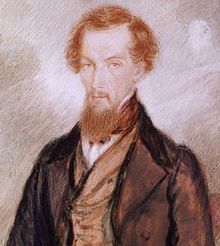Sir Henry Lawrence
| Sir Henry Montgomery Lawrence | |
|---|---|
 |
|
| Born |
28 June 1806 Matara, British Ceylon |
| Died | 4 July 1857 (aged 51) Lucknow, British India |
| Allegiance |
|
| Service/branch | Bengal Army |
| Years of service | 1823–1857 |
| Rank | Brigadier-General |
| Unit | Bengal Artillery |
| Battles/wars |
First Burmese War First Anglo-Afghan War First Anglo-Sikh War Second Anglo-Sikh War Indian Mutiny |
| Relations |
John Lawrence, 1st Baron Lawrence Sir George St Patrick Lawrence |
| Other work |
Resident Minister at Lahore Chief Commissioner of Awadh |
Brigadier-General Sir Henry Montgomery Lawrence KCB (28 June 1806 – 4 July 1857) was a British soldier and statesman in India, who died in the Siege of Lucknow during the Indian Rebellion. He is remembered in the Indian subcontinent as founder of the four Lawrence Military Asylums.
Lawrence was born in 1806 into an Irish family at Matara, British Ceylon. His father, Lieutenant-Colonel Alexander William Lawrence hailed from Derry and achieved distinction in the Siege of Seringapatnam. He had two brothers who would go on to achieve fame in their own right, George Lawrence and John Lawrence.
He was educated at Foyle College, Derry and the East India Company Military Seminary in Addiscombe, Surrey.
In 1822 he was commissioned as a second lieutenant in the Bengal Artillery, arriving in India the following year. He was based at the Calcutta suburb of Dum Dum, where Henry Havelock was also stationed about the same time. He soon saw action in the First Anglo-Burmese War. Lawrence and his battery formed part of the Chittagong column which General Joseph Morrison led over the jungle-covered hills of Arakan. The expedition was decimated by fever, and Lawrence nearly perished to the illness. He was sent first to Penang, and then Canton to convalesce, before being invalided back to England. Back in the United Kingdom, he assisted in the trigonometrical survey in Ireland.
...
Wikipedia
